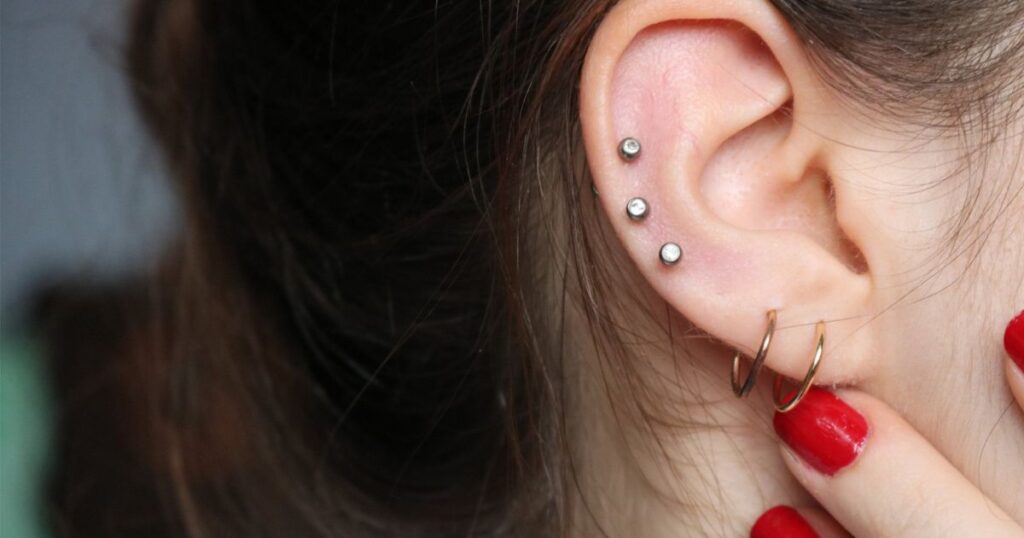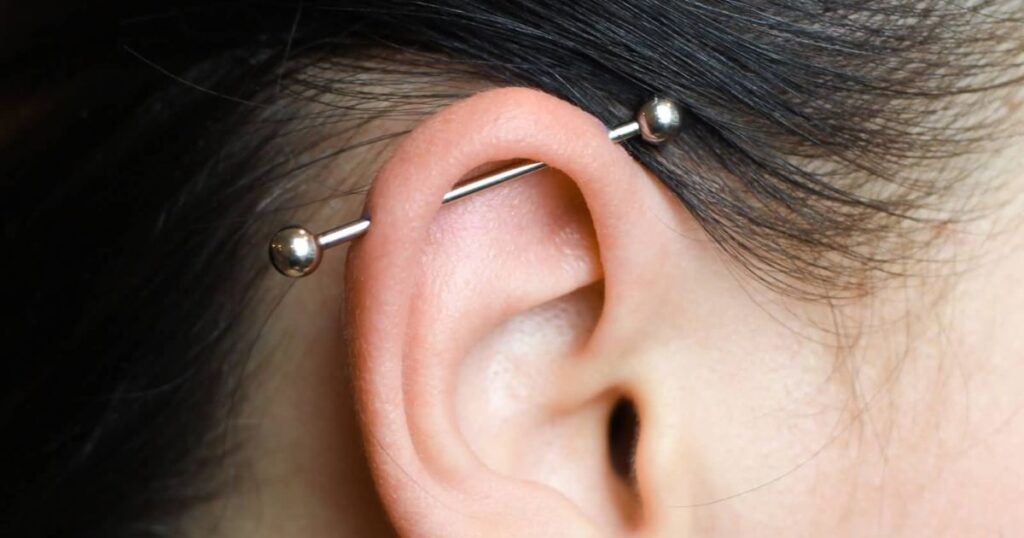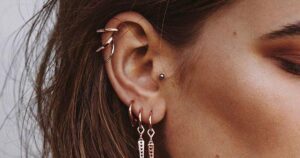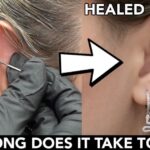Changing your earrings for the first time can be both exciting and nerve-wracking. It marks a milestone in your journey of self-expression and style. However, it’s crucial to approach this process with care and caution to ensure a smooth transition and prevent any potential complications. In this comprehensive guide, we will walk you through everything you need to know about changing your earrings for the first time, from proper hand hygiene to common concerns and FAQs.
Step 1: Proper Hand Hygiene
Before you even think about changing your earrings, it’s essential to prioritize proper hand hygiene. Wash your hands thoroughly with soap and water for at least 20 seconds. This helps eliminate any bacteria or germs that could potentially cause an infection when coming into contact with your piercing. Additionally, consider using a gentle antibacterial soap to ensure maximum cleanliness. Avoid touching your earrings or earlobes with unwashed hands to minimize the risk of irritation or infection.
Step 2: Timing is Key
Timing plays a crucial role when it comes to changing earrings for the first time. It’s recommended to wait until your piercing has fully healed before attempting to switch out your earrings. Generally, this process can take anywhere from 4 to 6 weeks for earlobe piercings and up to 12 weeks for cartilage piercings. Rushing this process can lead to irritation, discomfort, and potential complications such as infection or tearing of the piercing site. Patience is key to ensuring a smooth and successful transition.
Regarding This, Does It Hurt to Change Earrings for the First Time?

It’s natural to feel a bit apprehensive about changing your earrings for the first time, especially if you’re worried about experiencing pain or discomfort. In most cases, changing earrings should not be painful if done correctly and at the right time. However, you may experience some mild discomfort or pressure, particularly if your piercing is still healing. If you’re concerned about pain, consider applying a small amount of sterile saline solution to the piercing site before changing your earrings to help lubricate the area and minimize any discomfort.
How Do You Take Out First Earring Studs?
Removing your first earring studs can seem daunting, but it’s a relatively straightforward process with the right approach. Start by washing your hands thoroughly with soap and water to minimize the risk of introducing any bacteria or germs to the piercing site. Gently grasp the earring stud between your thumb and forefinger, avoiding any unnecessary twisting or pulling.
Slowly and carefully slide the earring out of your earlobe, taking care not to force it if you encounter any resistance. If the earring does not come out easily, do not force it. Instead, seek assistance from a professional piercer to avoid causing any damage to your earlobe.
How Do I Know My Ear Piercing is Healed?

Determining whether your ear piercing is fully healed is essential before attempting to change your earrings. Signs of a healed piercing include the absence of redness, swelling, or discharge around the piercing site, as well as the ability to move the earring freely without experiencing any pain or discomfort.
Additionally, the piercing hole should appear clean and well-formed, with no signs of irritation or infection. If you’re unsure whether your piercing is healed, consult with a professional piercer for guidance before changing your earrings.
Can I Take My Newly Pierced Earrings Out for an Hour?
While it’s generally recommended to leave newly pierced earrings in place for the first few weeks to promote proper healing, you may be wondering if it’s okay to remove them temporarily, such as for cleaning purposes. In most cases, it’s best to avoid removing newly pierced earrings for extended periods, especially within the first few weeks of getting your ears pierced.
Removing the earrings too soon can disrupt the healing process and increase the risk of complications such as infection or irritation. If you need to clean your earrings, opt for gentle cleaning solutions that can be applied without removing the earrings from your ears.
How Can I Make My Ear Piercing Heal Faster?

While proper hygiene and care are essential for promoting healing after getting your ears pierced, there are several additional steps you can take to help speed up the healing process. First and foremost, avoid touching or playing with your earrings unnecessarily, as this can introduce bacteria to the piercing site and delay healing.
Additionally, consider using saline solution or a mild antiseptic solution to clean the piercing site twice a day to keep it free from bacteria and debris. Finally, be sure to follow any aftercare instructions provided by your piercer and avoid activities that may put unnecessary strain on the piercing site, such as swimming or excessive sweating.
Why Does My Earring Hole Hurt When I Touch It?
Experiencing pain or discomfort when touching your earring hole could indicate a few different issues, including irritation, infection, or an allergic reaction. If your earring hole is sore or tender to the touch, it’s essential to first ensure that your hands are clean before examining the area. If you notice any signs of infection, such as redness, swelling, or discharge, contact your piercer or healthcare provider for further evaluation and treatment.
Additionally, if you suspect that you may be experiencing an allergic reaction to your earrings, consider switching to hypoallergenic earrings made from materials such as surgical steel or titanium to see if the symptoms improve.
Can’t Get Screw Back Earring Off?

Struggling to remove a screw-back earring can be frustrating, especially if you’re worried about causing damage to your earlobe. If you’re having trouble unscrewing the earring, try applying a small amount of lubricant, such as petroleum jelly or baby oil, to the screw to help loosen it.
Additionally, consider using a pair of jewelry pliers to gently grip the earring back and carefully unscrew it without applying excessive force. If you’re still unable to remove the earring, seek assistance from a professional piercer who can safely and effectively remove it for you.
Can I Take Out My Earrings After 4 Weeks?
While it’s tempting to change your earrings as soon as possible after getting your ears pierced, it’s essential to wait until the piercing has fully healed before attempting to remove them. In most cases, this process can take anywhere from 4 to 6 weeks for earlobe piercings and up to 12 weeks for cartilage piercings.
Removing the earrings too soon can disrupt the healing process and increase the risk of complications such as infection or tearing of the piercing site. Patience is key to ensuring a smooth and successful transition when changing earrings for the first time.
Can I Take My Earrings Out After 3 Weeks to Clean Them?

While it’s essential to keep your newly pierced earrings clean to promote proper healing, it’s generally not recommended to remove them for cleaning purposes within the first few weeks of getting your ears pierced. Removing the earrings too soon can disrupt the healing process and increase the risk of complications such as infection or irritation.
Instead, opt for gentle cleaning solutions that can be applied without removing the earrings from your ears, such as saline solution or a mild antiseptic solution. If you’re unsure about how to clean your earrings properly, consult with your piercer for guidance.
FAQs
What to do when changing earring for the first time?
Once the old earrings are out, Cabral says to “clean out the area with either sterile saline, wound wash, or non-iodized sea salt” to ensure the piercing site is clean for the new jewelry. Finally, ensure the new earrings are sterile, rewash your hands, and insert the new metal into the now-empty hole.
Is it supposed to hurt when you change your earrings for the first time?
It shouldn’t. By the time you remove your earrings for the first time after piercing, your ears should be fully healed. If you have an infection, see a doctor. If they have not healed in the recommended time (from memory that is 6 or 8 weeks) then, again, see a doctor.
Why does my piercing hurt when I change earrings?
The problem is, inside your ear piercing site, the skin is much thinner and more delicate. It can easily be damaged and is most likely not fully healed yet. Every time your earring moves or is changed, that delicate skin can be damaged again causing the pain to come back.
Is it normal for ears to bleed after changing earrings?
Don’t worry if your ear piercing bleeds, it happens to most of us. If your piercing is new, wait a few days to see if it stops. If bleeding continues or is accompanied by any worrying symptoms, you should consider getting it checked out by a doctor.
Conclusion
Changing your earrings for the first time is an exciting milestone, but it’s essential to approach it with care and caution to ensure a smooth and successful transition. By following proper hand hygiene practices, waiting until your piercing has fully healed, and addressing any concerns or questions you may have, you can confidently change your earrings and continue to express your unique style. Remember to prioritize your ear health and well-being above all else, and don’t hesitate to seek assistance from a professional piercer if you encounter any issues along the way. With the right approach and mindset, changing your earrings can be a positive and empowering experience.













